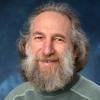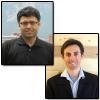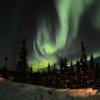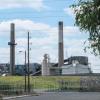Science & Technology
 <p>Being first in line has its advantages, even for wind turbines, which are propelled by comparatively smooth wind flow that helps them produce near-optimal power at varying wind speeds.</p>
<p>Being first in line has its advantages, even for wind turbines, which are propelled by comparatively smooth wind flow that helps them produce near-optimal power at varying wind speeds.</p> <p>The University of Colorado Boulder has named Mark D. Gross as the director of the campus Alliance for Technology, Learning and Society, or the ATLAS Institute. </p>
<p>The University of Colorado Boulder has named Mark D. Gross as the director of the campus Alliance for Technology, Learning and Society, or the ATLAS Institute. </p>
<p>Gross taught at CU-Boulder from 1990 to 1999 as an assistant and associate professor of architecture, planning and design. He returns to CU-Boulder for the ATLAS post from Carnegie Mellon University where he has been a professor of computational design since 2004. From 1999 to 2004, Gross was a professor of architecture at the University of Washington in Seattle.</p> <p>On Jan. 10, the U.S. Department of Justice and the U.S. Department of Commerce’s National Institute of Standards and Technology (NIST) announced appointments to a newly created National Commission on Forensic Science.</p>
<p>On Jan. 10, the U.S. Department of Justice and the U.S. Department of Commerce’s National Institute of Standards and Technology (NIST) announced appointments to a newly created National Commission on Forensic Science.</p>
<div>
University of Colorado Boulder Distinguished Professor and Nobel laureate Tom Cech is one of 32 commissioners chosen from a pool of more than 300 candidates.</div> <p>Two faculty members in the University of Colorado Boulder’s College of Engineering and Applied Science have been honored with the National Science Foundation’s prestigious CAREER award.</p>
<p>Two faculty members in the University of Colorado Boulder’s College of Engineering and Applied Science have been honored with the National Science Foundation’s prestigious CAREER award.</p>
<p>The NSF Faculty Early Career Development, or CAREER, award supports junior faculty members who demonstrate excellence in research and who effectively integrate their research with education. CU-Boulder’s recent recipients are Prashant Nagpal, an assistant professor of chemical and biological engineering, and Franck Vernerey, an assistant professor of civil, environmental and architectural engineering.</p> <p>University of Colorado Boulder space weather experts say a powerful solar storm may cause the aurora borealis to light up as far south as Colorado and New Mexico in the coming nights.</p>
<p>University of Colorado Boulder space weather experts say a powerful solar storm may cause the aurora borealis to light up as far south as Colorado and New Mexico in the coming nights.</p> <p>Power plants that use natural gas and a new technology to squeeze more energy from the fuel release far less of the greenhouse gas carbon dioxide than coal-fired power plants do, according to a new analysis accepted for publication Jan. 8 in <a href="http://onlinelibrary.wiley.com/doi/10.1002/2014EF000196/abstract"><em>Earth’s Future</em></a>, a journal of the <a href="http://sites.agu.org/">American Geophysical Union</a>. </p>
<p>Power plants that use natural gas and a new technology to squeeze more energy from the fuel release far less of the greenhouse gas carbon dioxide than coal-fired power plants do, according to a new analysis accepted for publication Jan. 8 in <a href="http://onlinelibrary.wiley.com/doi/10.1002/2014EF000196/abstract"><em>Earth’s Future</em></a>, a journal of the <a href="http://sites.agu.org/">American Geophysical Union</a>. </p> <p>Ana Maria Rey, a theoretical physicist at JILA, a joint institute of the University of Colorado Boulder and the National Institute of Standards and Technology, has been honored by the White House with a Presidential Early Career Award for Scientists and Engineers.</p>
<p>Ana Maria Rey, a theoretical physicist at JILA, a joint institute of the University of Colorado Boulder and the National Institute of Standards and Technology, has been honored by the White House with a Presidential Early Career Award for Scientists and Engineers.</p>
<p>PECASE is the highest honor bestowed by the U.S. government on science and engineering professionals in the early stages of their independent research careers.</p> <p>NASA Television will provide live coverage of the launch of Orbital Sciences Corp.’s commercial Cygnus spacecraft on Tuesday, Jan. 7 from NASA’s Wallops Flight Facility in Virginia, which will be carrying two University of Colorado Boulder payloads to the International Space Station.</p>
<p>NASA Television will provide live coverage of the launch of Orbital Sciences Corp.’s commercial Cygnus spacecraft on Tuesday, Jan. 7 from NASA’s Wallops Flight Facility in Virginia, which will be carrying two University of Colorado Boulder payloads to the International Space Station.</p>- <p>The confidence of Colorado business leaders has increased slightly going into the first quarter of 2014 as economic conditions improve and some political issues have subsided, according to the most recent Leeds Business Confidence Index, or LBCI, released today by the University of Colorado Boulder’s Leeds School of Business.</p>
- <p>Trees with smoother bark are better at repelling attacks by mountain pine beetles, which have difficulty gripping the slippery surface, according to a new study by the University of Colorado Boulder.</p>
<p>The findings, published online in the journal <em>Functional Ecology</em>, may help land managers make decisions about which trees to cull and which to keep in order to best protect forested properties against pine beetle infestation.</p>


